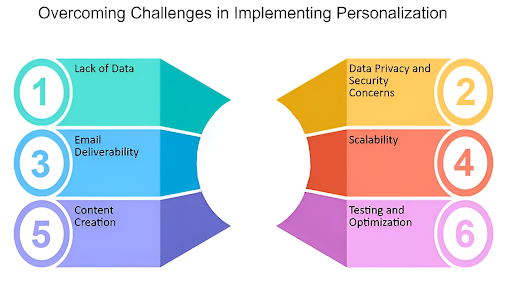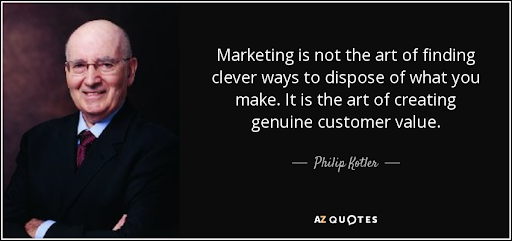Table of Contents
Introduction
In today’s digital age, consumers are inundated with countless marketing messages, making it increasingly difficult for brands to stand out. This is where marketing personalization comes into play. Marketing personalization involves tailoring your marketing efforts to meet the specific needs, preferences, and behaviors of individual customers.
When customers feel that a brand truly understands them and their needs, they are more likely to interact with the brand, make a purchase, and return for future business. Personalization helps to build trust and connection, which are critical components of a successful marketing strategy.
As the demand for personalized experiences continues to grow, businesses that fail to embrace marketing personalization risk being left behind. This ultimate guide will walk you through the key strategies and best practices for implementing effective personalization across various marketing channels.
The Foundations of Marketing Personalization

Understanding Your Audience
- To create effective personalized marketing strategies, it’s crucial to first understand who your audience is
- This involves collecting data on demographics (age, gender, location), psychographics (lifestyle, values, interests), and behavior (purchase history, website interactions)
- This data provides the foundation for understanding what drives your customers, enabling you to tailor your marketing efforts to meet their specific needs
- Utilize tools like Google Analytics, CRM systems, and customer surveys to gather and analyze data. Social media platforms also offer insights into customer interests and behaviors
- Techniques such as sentiment analysis, customer journey mapping, and heatmaps can provide deeper insights into how customers interact with your brand and what they’re looking for.
Segmentation and Targeting

- Segmentation involves dividing your broader audience into smaller, more specific groups based on shared characteristics. By segmenting your audience, you can deliver more relevant content that resonates with each group
- Effective segmentation strategies might include dividing customers by purchasing behavior, engagement level, or demographic factors
- Tailor your messaging and offers to the unique needs of each segment. For instance, new customers might receive welcome discounts, while loyal customers could be targeted with exclusive offers or VIP experiences
- Always ensure that the content you deliver is aligned with the interests and needs of the segment you are targeting.
Building Customer Personas

- Customer personas are semi-fictional representations of your ideal customers, based on data and research
- Creating detailed personas helps you understand your audience on a deeper level, allowing you to predict their needs, preferences, and pain points
- Personas typically include information such as age, job title, income level, challenges, and purchasing motivations
- Use your personas to guide your personalization strategies by anticipating what each type of customer is looking for
- For example, a persona representing young professionals might prioritize convenience and technology-driven solutions, while a persona representing retirees might value personalized customer service and reliability
- Align your marketing efforts with these predicted needs to create a more engaging and relevant experience for your customers.
Personalization Across Marketing Channels

Website Personalization
- Personalize your website by dynamically adjusting content and product recommendations based on the visitor’s behavior, location, and previous interactions
- This can include displaying different homepage banners, recommending products that complement previous purchases, or even changing the language or currency displayed based on the user’s location
- For example, if a customer frequently browses sports equipment, your website can prioritize sports-related content and products
- If a visitor abandons a shopping cart, your website can display a personalized message encouraging them to complete their purchase, possibly with an added incentive.
Email Marketing Personalization

- Personalized emails go beyond addressing the recipient by name; they involve customizing the entire email content based on the recipient’s preferences, purchase history, and engagement level
- This can include personalized subject lines, product recommendations, and tailored offers
- Segment your email list based on purchase history, engagement with previous emails, and browsing behavior. Use this segmentation to send targeted emails that are more likely to resonate with each group
- For instance, send a special offer to customers who haven’t purchased in a while, or a product recommendation to customers who recently made a related purchase
Social Media Personalization
- Social media platforms offer robust targeting options that allow you to deliver personalized content to specific audience segments
- Use these tools to reach the right audience with messages that are tailored to their interests and behaviors
- Social listening tools can help you monitor conversations around your brand and industry, providing insights into what your audience cares about
- Use these insights to inform your social media content, ensuring it aligns with current trends and resonates with your audience’s interests.
Advanced Personalization Strategies
Predictive Personalization
- Predictive personalization is an advanced strategy that leverages data analytics, machine learning, and artificial intelligence (AI) to anticipate customer needs and preferences before they are explicitly expressed
- By analyzing historical data, such as past purchases, browsing behavior, and engagement metrics, predictive models can forecast what a customer might be interested in or need next
- This allows businesses to deliver highly relevant content, product recommendations, and personalized offers at just the right moment, enhancing the customer experience and driving higher conversion rates
- For example, an e-commerce platform might use predictive personalization to recommend products that a customer is likely to purchase based on their previous shopping habits
- Similarly, a content streaming service might suggest new shows or movies that align with the user’s viewing history and preferences
- The key to successful predictive personalization is the continuous refinement of predictive models through machine learning, ensuring that predictions become more accurate and effective over time.
Cross-Channel Personalization

Cross-channel personalization ensures that customers receive a consistent and cohesive experience across all touchpoints, whether they are interacting with your brand through a website, mobile app, social media, email, or in-store.
- This strategy involves integrating data and personalization efforts across different channels so that the customer’s journey is seamless and personalized at every step
- For instance, if a customer adds items to their cart on a website but does not complete the purchase, they might receive a reminder email, see targeted ads on social media, or be offered a discount when they next visit the mobile app
- Cross-channel personalization not only enhances the user experience but also increases the likelihood of conversion by maintaining engagement across multiple platforms.
Behavioral Triggers
Behavioral triggers are automated responses that are activated by specific customer actions or behaviors. These triggers allow for real-time personalization, ensuring that your marketing efforts are timely and relevant
- Common behavioral triggers include cart abandonment emails, personalized product recommendations based on browsing history, and follow-up messages after a purchase
- For example, if a customer frequently views a particular product category but hasn’t made a purchase, an automated trigger might send them a special offer on items within that category
- Behavioral triggers are highly effective because they respond directly to customer intent, making them more likely to result in a desired action.
Measuring and Optimizing Personalization Efforts

Metrics for Personalization Success
- To gauge the effectiveness of personalization strategies, it is crucial to track specific metrics that indicate success
- Key performance indicators (KPIs) for personalization include conversion rates, customer retention rates, click-through rates (CTR), average order value (AOV), and customer lifetime value (CLV)
- These metrics provide insights into how well personalization efforts are resonating with customers and driving business outcomes.
A/B Testing and Experimentation
- A/B testing is a method of comparing two versions of a webpage, email, or ad to determine which performs better
- In the context of personalization, A/B testing allows marketers to experiment with different personalized elements—such as headlines, images or calls to action—to see which versions lead to higher engagement and conversions
- Continuous experimentation is essential for refining personalization strategies and ensuring that they are optimized for maximum impact.
Continuous Optimization
- Personalization is not a one-time effort; it requires ongoing optimization to remain effective
- This involves regularly reviewing performance metrics, conducting A/B tests, and updating personalization algorithms based on new data
- By continuously optimizing personalization strategies, businesses can adapt to changing customer behaviors and preferences, ensuring that their marketing efforts remain relevant and impactful.
Overcoming Challenges in Marketing Personalization

Data Privacy and Compliance
- One of the biggest challenges in marketing personalization is navigating data privacy regulations, such as GDPR and CCPA
- These laws require businesses to handle customer data with transparency and care, ensuring that they have explicit consent to collect and use personal information
- To overcome this challenge, businesses must implement best practices for ethical data collection, such as providing clear privacy policies, offering opt-in options, and allowing customers to manage their data preferences
Avoiding Over-Personalization
- While personalization can greatly enhance the customer experience, there is a risk of over-personalization, where marketing efforts feel invasive or creepy to the customer
- To avoid this, businesses should focus on delivering relevant content that genuinely adds value, without overstepping privacy boundaries
- Subtle personalization that respects the customer’s comfort level is more likely to be effective.
Scalability of Personalization
- Scaling personalization across a large customer base can be challenging, but it is necessary for maintaining consistency and relevance
- Automation tools, AI, and machine learning can help manage and deliver personalized experiences at scale
- By leveraging these technologies, businesses can ensure that every customer receives a tailored experience, regardless of the size of the audience
Conclusion
As marketing personalization continues to evolve, staying ahead of the curve is essential for businesses seeking to engage customers meaningfully and drive growth. Overcoming the challenges of data privacy, avoiding over-personalization, and scaling efforts across a broad customer base are critical steps in building successful personalization strategies.
Looking ahead, advancements in AI, machine learning, and emerging technologies like voice and visual search, and IoT will unlock new opportunities for hyper-personalization, enabling brands to create even more tailored and impactful customer experiences. By embracing these trends and refining personalization efforts, businesses can forge stronger connections with their customers and remain competitive in an increasingly personalized digital landscape.
Deepak Wadhwani has over 20 years experience in software/wireless technologies. He has worked with Fortune 500 companies including Intuit, ESRI, Qualcomm, Sprint, Verizon, Vodafone, Nortel, Microsoft and Oracle in over 60 countries. Deepak has worked on Internet marketing projects in San Diego, Los Angeles, Orange Country, Denver, Nashville, Kansas City, New York, San Francisco and Huntsville. Deepak has been a founder of technology Startups for one of the first Cityguides, yellow pages online and web based enterprise solutions. He is an internet marketing and technology expert & co-founder for a San Diego Internet marketing company.



